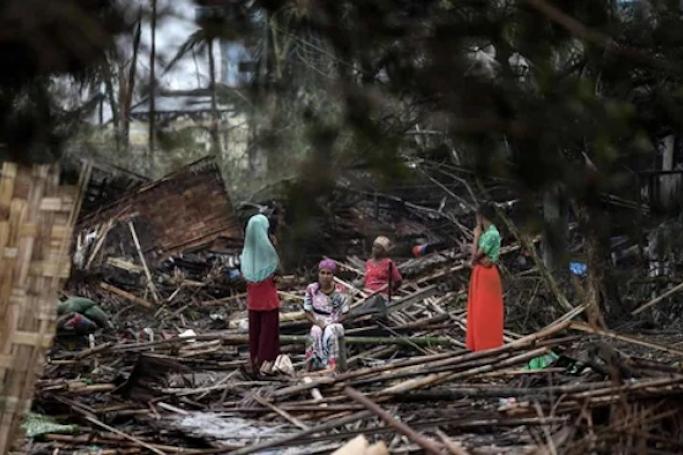Food and urgent supplies are desperately required for the Rohingya who have been severely impacted by the devastating Cyclone Mocha, according to Aung Kyaw Moe, an advisor on Rohingya issues for the National Unity Government [NUG].
He also highlighted the urgent need for medicines and feminine hygiene products for women affected by the cyclone.
The NUG advisor also talked about the challenges faced in accessing aid from certain international organizations due to the obstacles posed by the junta.
"Currently, they have not yet received humanitarian assistance. The Military Council has not permitted some international organizations to officially provide the assistance. At present, they need shelter, drinking water, medicines and food. These are things that are urgently needed. And feminine hygiene products are also needed,” he said.
The powerful Cyclone Mocha wreaked havoc in Sittwe, Rakhine State, causing extensive damage and resulting in significant casualties on May 14 and 15. However, the exact number of deaths cannot be confirmed yet.
However, according to Aung Kyaw Moe, in Sittwe alone, several internally displaced people’s (IDP) camps have reported a large death toll of over 400 Rohingya people.
“According to information from those in the area, the current death toll may be more than 400. That figure includes the number of dead bodies buried in accordance with religious rituals, plus the number of missing people,” he said. “If we put it all together, the estimate is that there may be more than 400 deaths in Sittwe alone. It is likely to be more. The situation of damage is almost 90 percent in the IDP camps. There are also severe damages in other places.”
Mizzima is currently investigating to verify the reported number of Rohingya fatalities exceeding 400.
Regarding the ongoing death toll, the Student Youth Association and the Alinyaung Youth Charity Association, who are actively involved in rescue efforts, have compiled a list indicating a death toll of 130 Rohingya individuals from IDP camps and villages in Sittwe. According to their list compiled on May 15 and 16, a total of 110 bodies have been laid to rest, while 20 individuals are currently listed as missing (and are presumed to be deceased). A significant number of casualties on their list, with 30 bodies out of the total 110, are from Bayda Village.
“The highest number of casualties is from Bayda Village. There have been claims that over 400 [Rohingyas] have lost their lives, but that information has not been confirmed. In certain instances, we were unable to recover the deceased bodies. However, in some cases, their families have acknowledged the likelihood of their missing relatives having died. That’s why the figure has reached that number. The exact count of fatalities and disappearances cannot be confirmed until next week. The figures we have released represent the list of bodies that have been discovered," said an information official from the rescue workers.
Regarding the fact that sufficient humanitarian aid did not arrive in Sittwe until two days after the cyclone, Mizzima tried to contact the junta’s relevant officials, but in vain. On the other hand, the junta media stated that the junta chief Senior General Min Aung Hlaing and his entourage visited Sittwe on 15 May and provided Kyat 7 billion (about US$2.5 million) and other aid supplies for cyclone victims.
Aung Kyaw Moe, the NUG advisor, told Mizzima that the majority of the fatalities were a result of involuntary deaths caused by the absence of strong shelters and travel restrictions imposed on the Rohingya population.
"Although advance warning was issued, there is no adequate robust infrastructure. Another thing is the travel restrictions. Many Rohingya are locked up in the camp, so even though they are allowed to move in the light of the last cyclone warning, they don't know where to go, and they unnecessarily die due to lack of immediate transportation,” he said.
The majority of Rohingya in Myanmar have to live in IDP camps and are limited in their freedom to move outside the camps. In Rakhine State, there are more than 20 Rohingya IDP camps.












